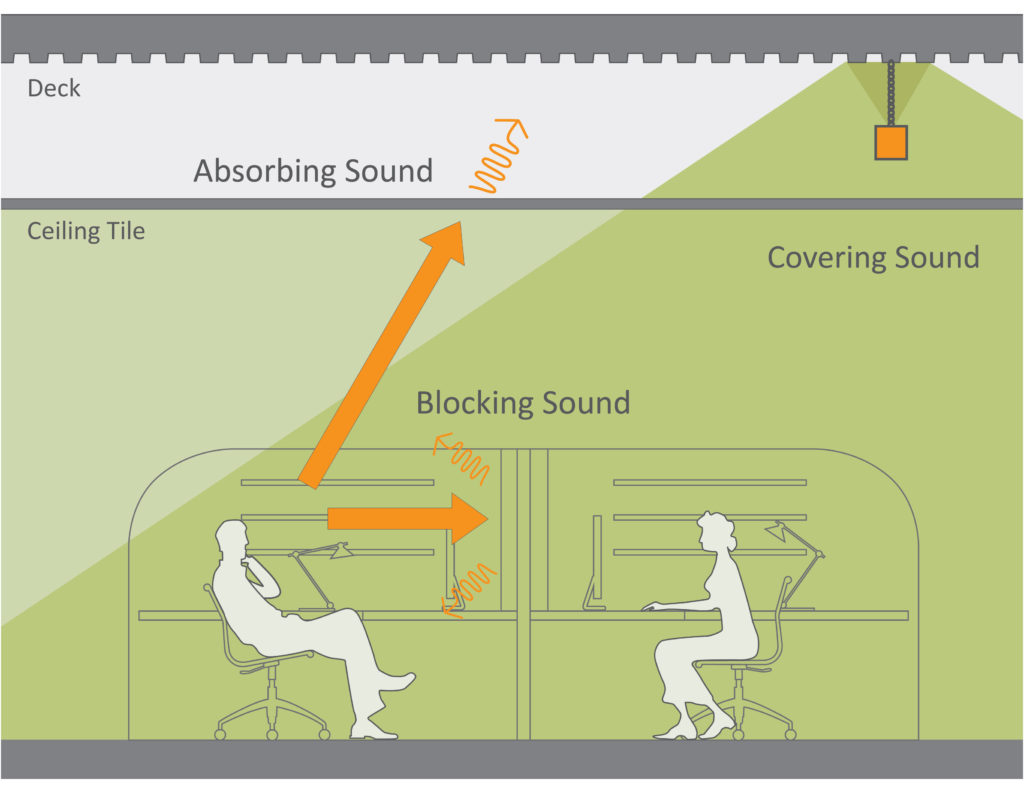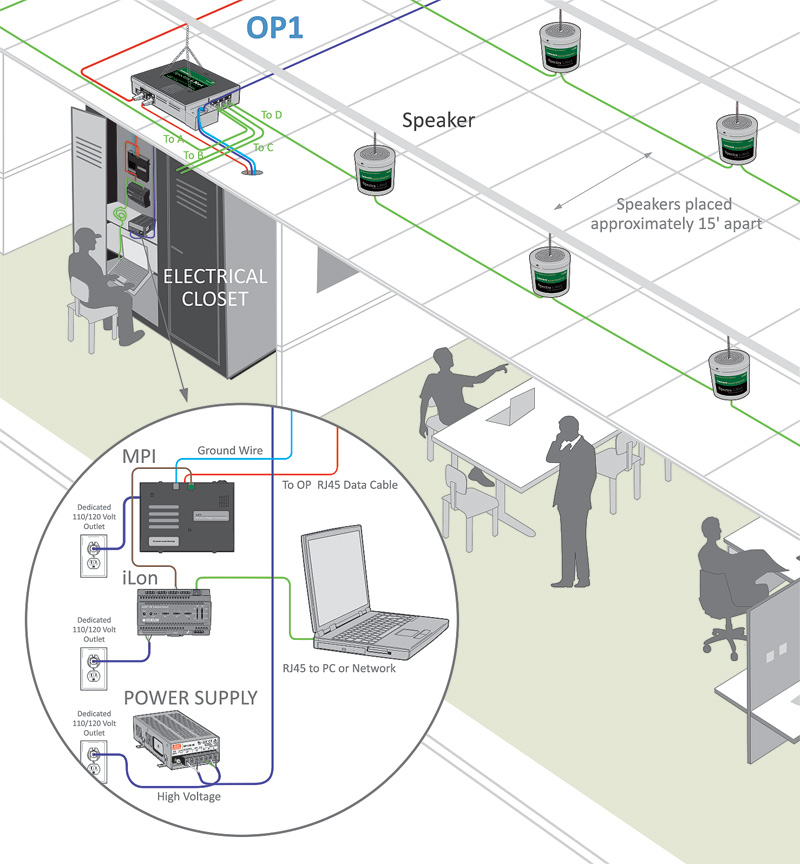Today, more than ever, sound masking is not only beneficial to companies but crucial to their success. With a significant shift toward open-office design, due to real estate consolidation and collaborative team efforts, sound masking becomes one of the remaining methods proven to manage office noise — which has a direct correlation to employee comfort, productivity and retention.
What exactly is sound masking? It is the introduction of a wide range of noise frequencies. Rather than providing a distraction like some forms of noise, though, sound masking is designed to pleasantly increase the ambient noise in the background in order to mask the speech of others to the point that their conversations are unintelligible.
1) Protect privacy
Speech privacy is one of two most important criteria in sound masking. Even if your company isn't bound by privacy laws and standards like the medical community is, it makes sense to provide that kind of privacy to your employees and clients. From sensitive medical and financial details to compensation or employee performance discussions that could potentially be overheard, safeguarding the information they share with you is vital to their comfort level. Sound masking improves the probability that words from a conversation taking place nearby cannot be understood.
2) Improve employee productivity
Did you know there is a disconnect between the effects that employees perceive background noise and other distractions as having on their productivity and what their employers think? According to Noise in the Office Workplace, a Cornell Cooperative Extension publication, seemingly routine sounds, such as computers dinging, conversations between coworkers and people entering and leaving the office, were noted as being bothersome by 90 percent of those people who responded to a survey about noisy work environments. This is in stark contrast to the percentage of executives who noted that background noise and loud coworkers — 39 and 33 percent — respectively affected the productivity of their employees.
3) Safeguarding Employees and Increasing Retention
The same Cornell publication noted above gleaned some striking negative health effects experienced by employees who must work with a great deal of distraction and noise. With the continued trend toward an open office environment that encourages collaboration and teamwork, safeguarding employees from these effects is important. Some of these negative effects include an increase in hormone levels, fatigue and illness which can lead to more sick days. Stress in the workplace — along with lower morale and a reduction in job satisfaction — can increase employee turnover and cause costs to rise as new employees must be found and trained.
4) A more comfortable environment
The other most important criteria in sound masking is comfort. The intention is to transfer an employee to an environment in which they deem comfortable enough to work — such as a coffee shop or a beach. In these types of places, a person knows there will be conversations happening around them, but because the ambient background noise is loud enough, they are not distracted. Similarly, infusing an office with a sound masking system supports a more comfortable environment for office workers and clients alike.
Sound masking is not simply a way to improve the space in which employees must function. With the right sound masking elements, employee retention and satisfaction improves. This, in turn, increases their productivity while assuring clients that their private information is protected.





